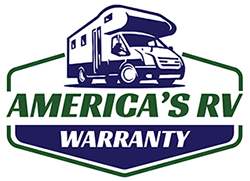
Cruising down the highway on a road trip is one of the great American experiences, and an RV is the ultimate road trip vehicle. Everyone remembers their favorite road trip: the scenic overlooks, the good times, and even the mishaps. There’s another important ingredient to a great road trip, though: planning.
Hitting the road at the spur of the moment can be fun, but planning ahead never hurts, and makes it easier to include family and friends. It also helps travelers budget to get the most for their time and effort.
The prospect of planning an RV trip can be daunting. The dates, distances, and the sheer number of possibilities can feel like forbidding barriers. With a few tips, however, it’s easy to become a professional trip planner and build your dream vacation. Follow these steps for a smooth ride along the way.
Before you plan your trip, make sure your RV is roadworthy. If its your first trip of the season and your RV was stored for the winter, you’ll want to dewinterize your RV before making too many plans.
The journey is important, but for most the destination is the big payoff. With the freedom an RV brings, the options can be overwhelming, making it tough to settle on where to go. To pick a place, try starting with one of these:
The perfect combination of time and place, some experiences make memories that last a lifetime. Many travelers first think of natural attractions, like the February Firefall in Yosemite or a winter wolf watch in Yellowstone National Park, but state fairs and festivals can be just an enjoyable. Many festivals, like the International Albuquerque Balloon Fiesta or Burning Man, have RV parks on location.
Choosing an event as a destination simplifies the when and where. From there, reserve a campsite near your destination. Since events draw crowds, you’ll want to make reservations early—campgrounds near popular attractions sometimes fill up months in advance.
Life is for living, so if there’s a place you’ve always wanted to go, GO! Keep in mind that campgrounds at popular destinations like national parks often fill up ahead of time, so it helps to make a reservations.
If the park’s reservations are booked, though, it doesn’t mean you can’t go. Many national parks have campgrounds that operate on a first come, first served policy. Popular parks like the Grand Canyon National Park are surrounded by public and private campgrounds.
Some people have a hard time making up their mind—that’s why pizzas come with toppings half-and-half toppings. A quick internet search for RV trip destinations results in plenty of resources to guide undecided travelers to their dream vacation (here’s an example).
There are plenty of books about road trips, such as the National Geographic Guide to Scenic Highways and Byways and Road Trip USA by Jamie Jensen. From Pacific Northwest to the Gulf coast, these guides lead you to beautiful views and breathtaking scenes of nature.
RV owners want to enjoy their time on the road. It’s part of the adventure. Researching the route in advance makes roadtrippers aware of opportunities and hazards alike.
Resources like Google Maps can plot a course from point A to point B and offer information about traffic delays and mileage, but researching the specific routes in a search engine usually yields a wealth of advice from other travelers. Apps like the RV Trip Wizard cost money, but can simplify the route planning process.
When deciding how to get where you’re going, keep the following in mind:
When you’re on the road, apps like Waze can alert you, and newer motorhomes often come with navigation packages that can optimize the route. Other apps can help you navigate more easily and save money on fuel.
When building an itinerary, add time to account for things that may come up unexpectedly. Construction and accidents cause traffic delays, and you may have to make unintended stops. You might also find a sudden opportunity to visit a museum or enjoy a picnic lunch, for instance, and having room in your schedule to do so takes the stress out of spontaneity.
Leaving room in your schedule is all the more important in recent years, as RV ownership has skyrocketed. This means more RVs on the road, more RVs parked at attractions, and fuller campgrounds. Even if you have traveled somewhere in the last few years, be prepared for things to be busier—and move more slowly—the next time you visit.
There are hundreds of public and private RV parks and campgrounds across the country. To find campgrounds along your route or at your destination, use resources like RVBuddy, GO RVing, and Campedium.
Not all campsites are created equal. Consider these factors when choosing campgrounds and campsites:
Discounts on campsites are available through memberships to RV clubs and camping organizations like the FMCA or KOA.
For first-time RVers this step can be the most intimidating, but this process is straightforward. If it is your first time, let them know when you check-in, and they may be able to send someone to assist you.
When it’s time to break camp, just reverse the order of the steps above.
When the trip is over, revisit the experience. Go over the highlights and best moments. Which parts of the trip would you recommend to others?
Ask which aspects of the trip could have been better, and what were some problems you faced? What could be done in the future to prevent these problems? Ask the other members of the group, and write down the most important points—this information can make your next trip even better.
